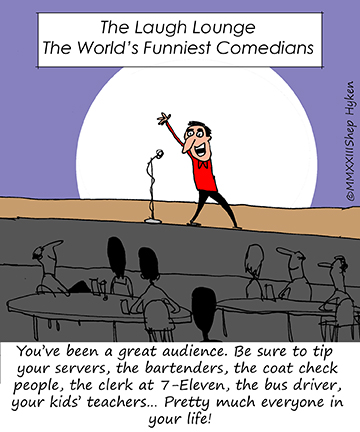The other day I was at the airport and ordered a chicken sandwich from one of the “to go” restaurants. When it came time to pay, they didn’t ask me for a tip. For a moment, I thought, “Did I go back in time?”

This is just my opinion, but the concept of tipping is getting out of hand. I go to a fast-food restaurant and order a burger and fries. The person behind the counter takes my money and gives me my food. For most of my life – until the recent past – the customer wasn’t expected to tip. Today, there is an expectation, even if it is disguised as an option. I feel guilty if I don’t check one of the boxes that ask me how much I want to tip.
Tipflation and tip creeping
There are even new terms for this current emphasis on tipping, including tipflation and tip creeping.
Tipflation is the rising expectation of higher tips. It used to be customary to tip 15% for good service and 20% for amazing service. Today you’re seeing options at checkout for tips as high as 30%. According to an article in RetailWire, some tipping options start at 25%.
Tip creeping refers to additional businesses where tips are now expected. People used to tip servers at restaurants, taxi drivers, hotel staff and other traditional service-oriented businesses. Now customers are being asked to tip at auto shops, retail outlets and more. I recently bought a candy bar and paid through the store’s self-service checkout system. I was surprised there was an option to leave a tip for the candy bar that I picked out and paid for on a self-service machine.
According to Wikipedia, the practice of tipping began in Tudor, England. It has an interesting and, by today’s standards, controversial history. In medieval times, tipping was a “master-serf” custom wherein a servant would receive extra money for performing “superbly well.” Somewhere around 1850 or 1860, Americans started tipping. Back then, tipping was tied to higher social status, typically for proving to others you could afford to do so. Obviously, that has changed.
Tipping, which is usually seen as a gesture of appreciation for a good service experience, has become, at least for some businesses, perceived as an obligation, regardless of how good or bad the experience is. There will be a point where this becomes a problem for businesses that force the obligation to tip on the customer. Our customer service research finds almost half of American consumers are willing to pay more for good service. That means they will probably tip, too – when it’s deserved.
Related: Customers Don’t Care About the Details; They Care About the Destination


